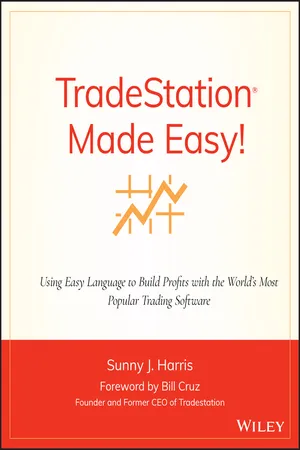Computer Science
Javascript For Loop
A JavaScript for loop is a control flow statement that allows you to repeatedly execute a block of code. It consists of three parts: initialization, condition, and iteration, which are used to control the number of times the loop runs. This looping structure is commonly used for iterating over arrays, performing calculations, and executing code based on specific conditions.
Written by Perlego with AI-assistance
6 Key excerpts on "Javascript For Loop"
Learn about this page
Index pages curate the most relevant extracts from our library of academic textbooks. They’ve been created using an in-house natural language model (NLM), each adding context and meaning to key research topics.
- eBook - ePub
Confident Web Design
Master the Fundamentals of Website Creation and Supercharge Your Career
- Kenny Wood(Author)
- 2018(Publication Date)
- Kogan Page(Publisher)
As we just discovered, loops are a way of performing an action multiple times in a programmatic way. They are a way to run a piece of code multiple times as per your requirements. They are often used alongside arrays, but their uses span far beyond just working with arrays. There are four different types of loops in JavaScript. The most common loop you will see is the ‘for loop’. Let’s take a closer look at this loop now.The for loop
The for loop is a very common loop, which simply runs a section of code a defined number of times. Here’s how it works:Passage contains an image
for(statement 1; statements 2; statement 3) { }This is the basic structure of the for loop. We start with the keyword ‘for’, followed by three statements, which define how many times our loop runs. Statement 1 is a piece of code you will write that will be run BEFORE the loop runs. Statement 2 is a condition statement, which will decide whether or not the loop should run. Statement 3 is a piece of code you will write that will be run AFTER your code inside the loop is run. Let’s look at an example and break down exactly how it all works:Passage contains an image
for(var i = 0; i < 10; i++) { console.log(i); }The above loop will run for 10 times exactly and then stop. Here’s what’s going on here:- Var i = 0 This code declares a variable called i, and sets it equal to 0. This code runs before any loops are run. This section is only ever run once at the start of the loop process.
- i < 10
The loop then checks this statement to see if it returns true. This statement in question is ‘is the variable i less than the value 10?’. Because our variable i is set to 0, this will return TRUE, and so the loop will run. The statement here is what’s known as a condition. We will explore more about conditions later.
- i++
After the block of code inside the curly brackets is run, this is then executed. Remember when we see this i++ it is an arithmetic operation, that is the equivalent to i = i + 1. The code here simply adds 1 to our i variable. You can perform any operation here; you are not just limited to adding 1.
- eBook - ePub
- Mike McGrath(Author)
- 2020(Publication Date)
- In Easy Steps Limited(Publisher)
Create an HTML document with a self-invoking function that begins by declaring a variablelet day switch.htmlNext, insert a switch statement to assign a value to the variable following the evaluation of an expressionswitch( 5 - 2 ) { case 1 : day = ‘ Monday’ ; break case 2 : day = ‘ Tuesday’ ; break case 3 : day = ‘ Wednesday’ ; break case 4 : day = ‘ Thursday’ ; break case 5 : day = ‘ Friday’ ; break default : day = ‘ Weekend’ }Now, insert a statement to output the value assigned by the case statement that found a matchconsole.log( ‘ It is ‘ + day )Save the HTML document, then open it in your browser and launch the console to see the assigned value in outputString values offered as possible case matches must be enclosed within quotes like all other string values.Loop ForA loop is a structure containing a test condition and one or more statements that are repeatedly executed while the test condition is met. Each single examination of the condition and execution of the statements is called an “iteration”. When the test condition is not met, no further iterations are made and flow continues at the next statement following the loop structure.Perhaps the most commonly used loop structure in JavaScript is the for loop, which has this syntax:for ( initializer ; condition ; modifier ) { statements-to-be-executed }The parentheses after the for keyword contain three expressions that control the number of iterations the loop will perform:• Initializer – a statement that specifies the initial value of a variable that will be used to count the number of loop iterations. Traditionally, this trivial counter variable is simply named “i”.• Condition – an expression that is tested for a boolean true value on each iteration. When the evaluation returns true , the loop statements are then executed to complete that iteration. If the evaluation returns false - Kenneth J. Luterbach(Author)
- 2018(Publication Date)
- Routledge(Publisher)
pointsEarned , after which the program will display the corresponding letter grade.Iterative Statements
An iterative statement creates a loop, which enables the repeated execution of a set of statements. At times, programmers include an iterative statement within an iterative statement (or loop within a loop), which we will do after mastering straightforward loops.Repetition a Fixed Number of Times
for (i = 1; i <= 7; i++) {// loop body print(i); }The for loop above displays the numbers 1 through 7, each on a separate line. Initially, the loop control variable, i is set to 1. As long as i is less than or equal to 7, the statement or statements in the loop body are executed. Since braces {} surround the loop body, any number of statements can be included in the loop body.Run the for loop above in the JavaScript shell. Type the first line and hold down the Shift Key before pressing the Enter or Return key. In that way, the first line will not be executed yet. Then type the second line and again hold down the Shift Key before pressing the Enter or Return key. Lastly, enter the final closing brace} and press the Enter or Return key. Alternatively, you could enter the code into your text editor, then save and run.Once you have that loop working, editor and enter the following code in lates the sum of a set of numbers. Save open a new document in your text order to create a program that calcuthe file as nwnberCmnclierl.js.sum = 0; for (i = 1; i <= 5; i++) { print ("Enter a number to include in the sum"); currentNumber = readline(); sum = sum + currentNumber; } print("The sum is " + sum);- Task 3.1 Enhance the numberCruncher1.js by also calculating and displaying the mean, which in this case is the sum divided by five (i.e., sum / 5 ).
- Task 3.2 Always calculating the sum of five numbers is a severe limitation. Before the loop begins in numberCruncher1.js , prompt the user to enter the population size, N , which is the number of numbers to be summed. The variable you use for population size will replace the 5 in the for
- eBook - ePub
Coding + Math
Strengthen K–5 Math Skills With Computer Science
- Nicol R. Howard(Author)
- 2020(Publication Date)
Figure 1.2 ). This area has been investigated widely, as examined in twenty-four studies in the Zhang and Nouri (2019) review, and there was evidence of improved ability to use conditionals and control the flow of programs in the Scratch environment. It is possible that a programming context is better suited for teaching conditionals because it is an applied use of the concept to accomplish a programmatic goal. However, conditionals can also be modeled effectively through the use of flowcharts or unplugged programming activities.Loops
Loops are a mainstay of programming, allowing far more efficiency in programming tasks that must be repeated until a desired result is achieved. For example, if a programmer wants the program to perform a task repeatedly a certain number of times but wants the user to determine that number at runtime, the code would utilize a “for-loop”, accepting user input to set the number of intervals. In Scratch terminology, the coder could use an “ask” block to get user input on how many times the sprite should follow a certain sequence. In that case, the code would contain a “repeat” block to encapsulate the loop containing the blocks in the sequence. This not only prevents the need for repetitive code, but also avoids restricting the loop to some predetermined maximum number of iterations. While loops provide additional power and flexibility to the programmer, they also present a source of potential errors if not used properly.Research has shown the use of endless loops in the Scratch environment as a source of many programming errors, where programs get stuck in never-ending loops (Zhang & Nouri, 2019). Varied understanding of different types of loops, particularly nested loops, have often caused confusion, but this confusion has been less prevalent for Scratch users as compared to text-based languages, since loops are easier to identify in a block-based environment (Mladenovi et al., 2017). Perhaps the best analogy for loops in math is summation notation (∑ 2i , e.g., meaning the summation of all values of 2i , starting with 1 and ending with 10); this concept is usually not covered until secondary school. Flowcharting, which will be covered in chapter 4 - eBook - ePub
TradeStation Made Easy!
Using EasyLanguage to Build Profits with the World's Most Popular Trading Software
- Sunny J. Harris(Author)
- 2011(Publication Date)
- Wiley(Publisher)
Chapter 11 Loops In This Chapter- Introduction
- For
- While
Aloop is just as it sounds; it goes around and around until you tell it to stop. A loop defines a group of instructions that will continue executing until a condition is met. The condition being met will cause the loop to stop.A FOR loop will execute a predefined number of times. The predefined number of times is the condition. A WHILE loop will continue to execute while (as long as) the condition is true.Loops allow you to calculate something over a range of values, such as from 1 to 10. Or to take action only while a condition is met, such as: while it is the month of October, only take short trades. Loops allow you to calculate averages, and summations and even count backward.As your programming skills become more proficient, you will find yourself discovering more and more uses for loops. FOR TEMPLATE 1FOR Value1 = m TO n BEGIN … END;TEMPLATE 2FOR Value1 = m DOWNTO n BEGIN … END;The FOR command always appears with a BEGIN … END block and is sometimes referred to as a FOR … BEGIN command. The FOR command is always followed by a set of variables that define the starting and ending number of steps to execute the loop. This structure is pretty complex until you get accustomed to it; then it will become second nature, so don’t start worrying yet. Templates for these concepts are shown above. You will specify m and n, and provide code for your task in place of the ... s.FOR is always followed by a variable name (Value1 in Figure 11.1 - eBook - ePub
Hack Audio
An Introduction to Computer Programming and Digital Signal Processing in MATLAB
- Eric Tarr(Author)
- 2018(Publication Date)
- Routledge(Publisher)
Example 5.9: Script: forLoopExample1.mThe variable declared with the for loop can be used for counting, as part of mathematical expressions, and as an index for arrays. This is a useful approach to indexing each element in an array, one by one, from start to finish.Examples: Save and run the following m-file in MATLAB.% This script demonstrates several examples of using % the iteration variable for different purposes within % a loop. % Example array for indexing a = [ -0.2, 0.4, -0.8, 0.5, 0.1, -0.6];for element = 1:6 % Declare loop to index each elementa(element) % Print an individual element% Use looping variable for creating a new arrayendh(t) = 0;for t = 1:5endh % Print the array after loop is complete% Use variable with both an array and mathematical expressionfor t = 1:5hh(t) = t+100 % Conceptually, "hh(t)" is a mathematical function% over the variable "t" with values {1,2,3,4,5}endTs = (1/48000); % Assume a "sampling period" Tsfor n = 1:10% Relationship between sample number and time in secondst(n) = n*Ts;endsampleNum = 1; % Initialize additional counting variable% This loop uses a variable "t" with a fractional step sizefor t = 0:0.1:1% Value of "t" is assigned to array at integer indexk(sampleNum) = tsampleNum = sampleNum + 1 % Iterate integer variableendExample 5.10: Script: forLoopExample2.mwhile Statement
Another type of loop is declared in MATLAB using a while statement. Following the while keyword, a logical expression is used to define the condition for which the loop executes. Therefore, a while loop is like a conditional statement (Section 5.3.1 ) which also repeats. The while loop needs to be concluded by the keyword end to indicate the lines of code to be repeated. Only the commands on lines between while and end are repeated for the loop.When execution reaches the declaration of the loop, if the logical operation is TRUE, then the code in the loop is executed. When the commands within the loop are complete, execution returns to the logical expression at the loop declaration, and it is evaluated again. As long as the logical expression remains TRUE, the loop continues to repeat. At any point, if the logical expression produces a FALSE result, then execution jumps to the end of the loop.





